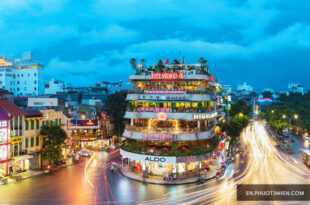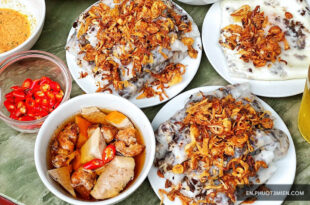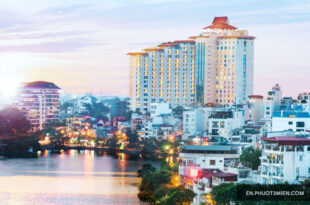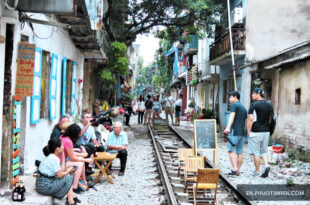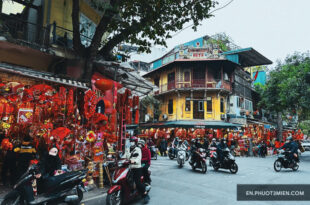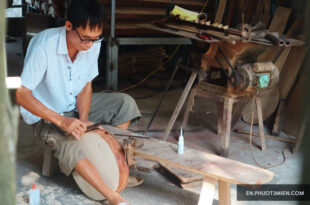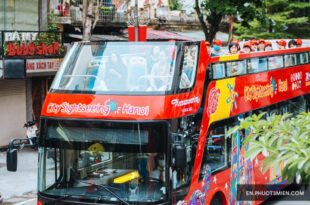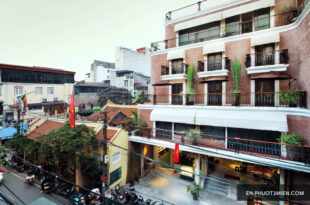Regional Differences in Vietnamese Cuisine – North, Central and South
Vietnam is a long stretch of a country, so it makes sense that the tastes of the locals and thus the cuisines change depending on location. Travelers come to Vietnam with an intention of seeing its surreal landscapes of which the country has no shortage. From the cascading rice terraces of Sapa in the north to the silky-smooth red and white sand dunes of Mui Ne in the south, each major city of the country has something for everyone to see which makes Vietnam a backpacker’s paradise.
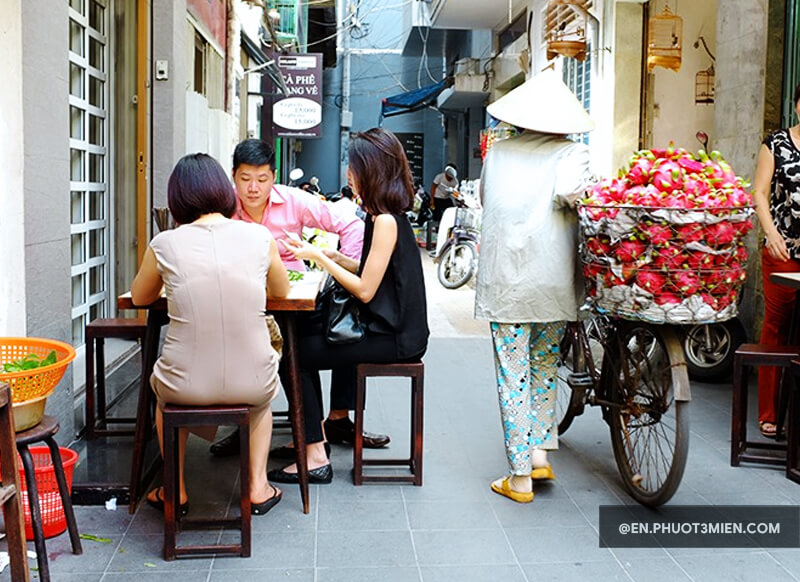
However, your itinerary is incomplete if you do not make it a priority to interact with the curious locals, learn of their war-torn past, and of course, eat their food. It makes sense that the type of food available throughout the country changes as Vietnam is a long stretch of country with many different climates. Here is an in-depth look into the regional differences in Vietnamese cuisine.
PS: I’ve included links to easy recipes for each dish I tried. All you have to do is click on the first mention of each dish you come across
Vietnam is undoubtedly a street eater’s paradise!
The country has a plethora of options for those who want to eat like a local, which simply means to happily crouch over a bowl of rice or noodles on a sidewalk. You will see markets on literally every street and stalls on every corner offering a variety of dishes popular among the people, so finding a meal to suit your tastes is a nonissue. You will find some of the best food in Vietnam on the sidewalk, but if you’re looking for a comfortable upscale restaurant, there are obviously places that cater to that as well. Many offer Vietnamese fusion cuisine, whether it be a mix of French, Japanese or Italian, and if you’re tired of the constant rice and noodles, you can always resort to a pizza or a burger. Vietnam really does have it all.
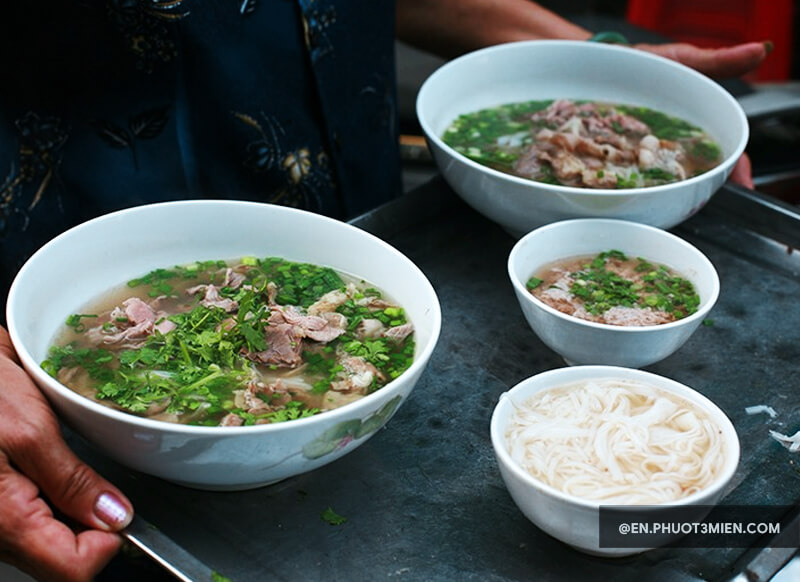
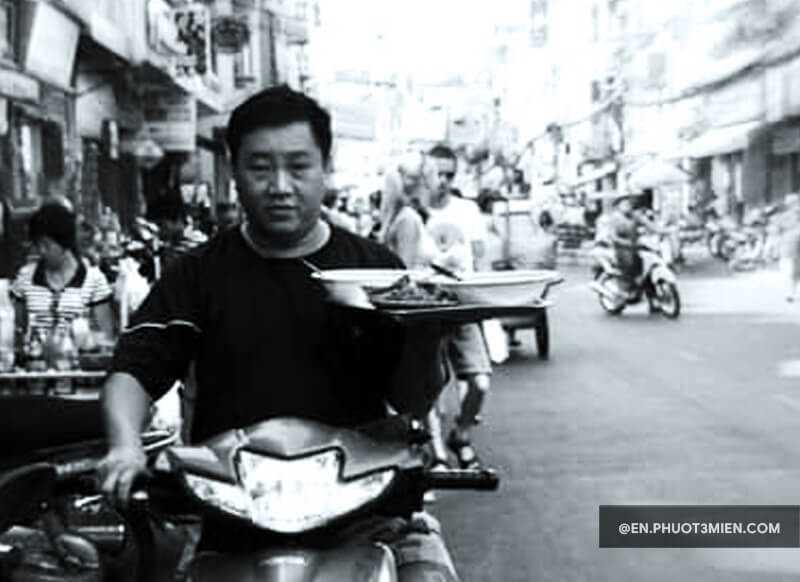
Northern Vietnamese Cuisine
Northern Vietnam, the cradle of Vietnamese civilization, is the birthplace of some of the signature dishes of the country such as banh cuon, bun rieu, and bun cha. Another one of these, perhaps the most famous – pho – is the Vietnamese de facto national dish. Locals enjoy this at any time of the day, but mostly remains a staple for the early rising Vietnamese, and it is extremely unlikely that you will come across a restaurant that does not have it on their menu.
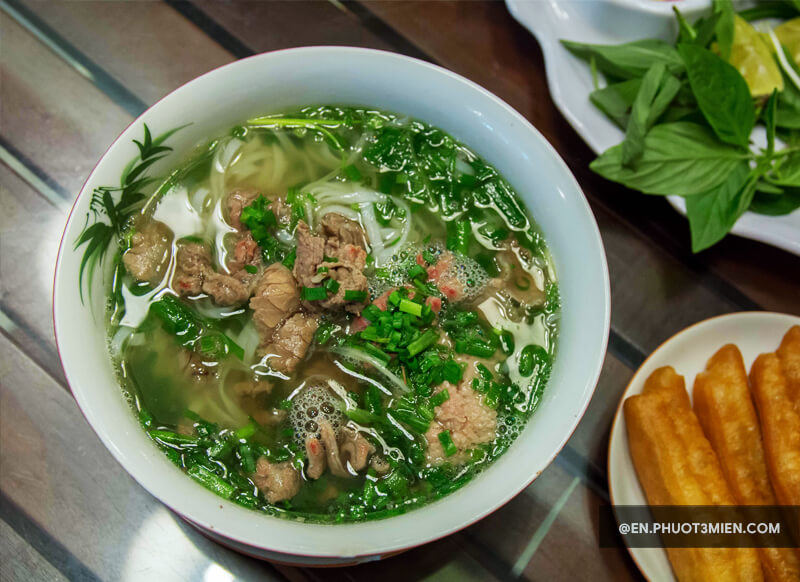
When asked around for one’s opinion on where you can find the best pho in town, multiple sources will all direct you down the same path to the Old Quarter of Hanoi, to a restaurant located at 49 Bat Da Street, called Pho Gia Truyen. Given the hype, the restaurant isn’t really what you’d expect – a small space looking rather old and tired with child-size wooden stools and communal tables, so you may feel as if you’ve arrived at the wrong place. But when you see half of Hanoi queuing up outside that are undoubtedly down to pho, you will know that your quest was a success. The next realization to hit you is that you’re never gonna find a seat inside. Maybe you should have rented a motorbike just for this journey so you could join the countless others enjoying their meals perched up on their bikes outside.
When you see half of Hanoi queuing up outside that are undoubtedly down to pho, you will know that your quest was a success.
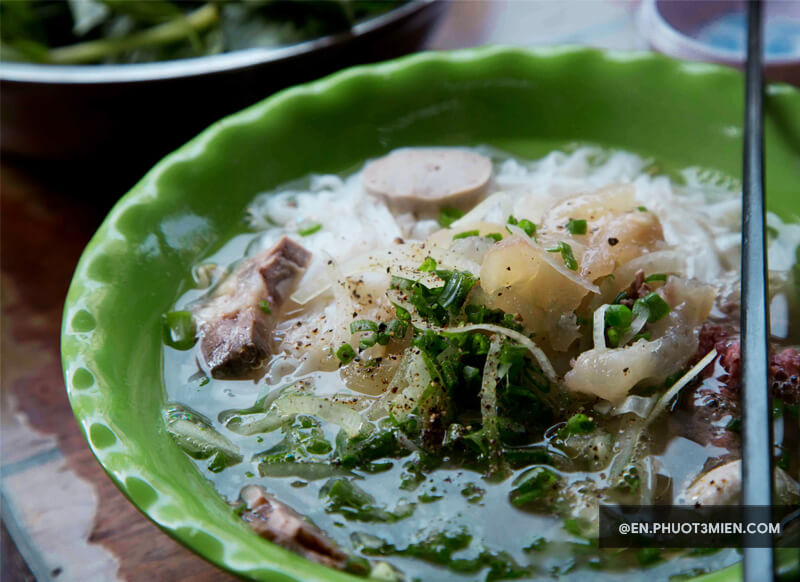
Pho is basically a noodle soup that consists of silky soft rice noodles, a complex, flavorful, yet clear and fragrant broth, a few herbs and spices such as basil, coriander and star anise to garnish, multiple vegetables like onions, garlic, and bean sprouts and finally, a type of meat – primarily chicken (pho ga) or beef (pho bo). For extra flavoring, you may add any or all of the condiments found on virtually every restaurant table in Vietnam – from red chili and lime to soy sauce, hoisin sauce and nuoc cham (made for dipping from fish sauce).
For more info on this dish, you can watch the video below and click through to this article: Pho.
Another regional signature dish is banh cuon – made from a thin sheet of steamed fermented rice batter rolled around a mixture of cooked and seasoned minced pork, wood ear mushroom, onions, and shallots. The dish is usually eaten with Vietnamese ham, steamed bean sprouts and cucumbers with the dipping sauce mentioned earlier, nước chấm. Other dishes to try in the region include bun rieu (crab noodle soup), and bun cha (grilled pork and noodle).
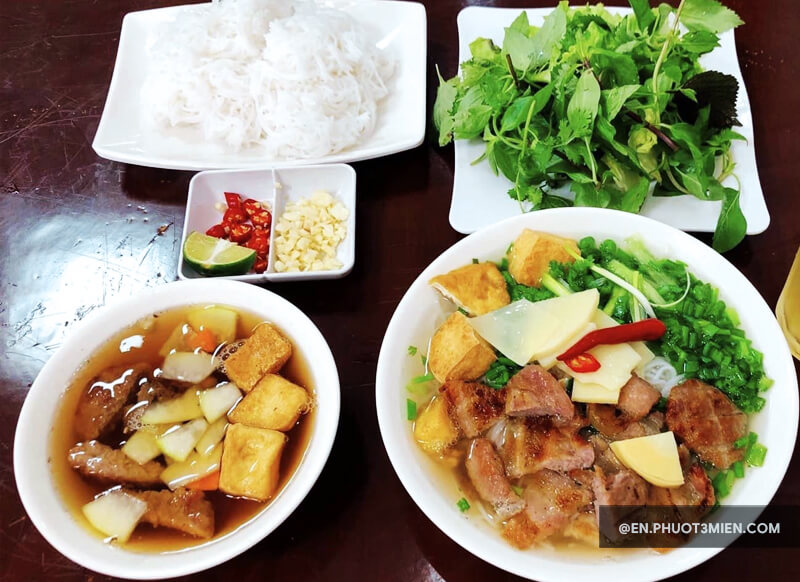
And if you’re feeling hungry, here’s where you need to go to find the best Bun Cha Ha Noi:
Bún chả Hồ Gươm Address: 135 Vo Van Tan Street, Ward 6, District 3
KKday is a travel APP platform offering over 20,000+ online products such as: tickets for amusement parks, outdoor services, sightseeing tours, culinary experiences, transportation, accommodation, courses, and local culture... Currently, there is a summer promotion with discounts up to 50% and coupons up to 250K VND off.

Attractive discount codes such as: 100K VND off for new accounts, 150K VND off summer promotion, 250K VND off, KKday birthday celebration...
And an article to follow: Bun cha.
After a few meals, it will be evident that northern Vietnamese cuisine is heavily influenced by its giant (and intrusive?) neighbor, China, with its stir-frys, noodle-based soups, the regular use of soy sauce and of course, the bane of my existence, chopsticks – which are by the way, extremely impractical on slippery food. Another important note to remember as you slurp down some noodle soup is that the cooler northern climate is less hospitable for cultivation. This limits the production and availability of certain ingredients such as chilies, therefore people use black pepper instead as a substitute which is why you will find these dishes barely spicy. Overall the flavors up north are more subtle and harmonious and not bold in any particular taste, which is not what you can say when you try various other dishes as you head slowly towards central Vietnam.
Central Vietnamese Cuisine
On your way down, you will experience a gradual flavor explosion in your mouth. Central Vietnamese cuisine is noted for being bold and daring all the while retaining some of the French flavor and techniques you commonly find in the south.
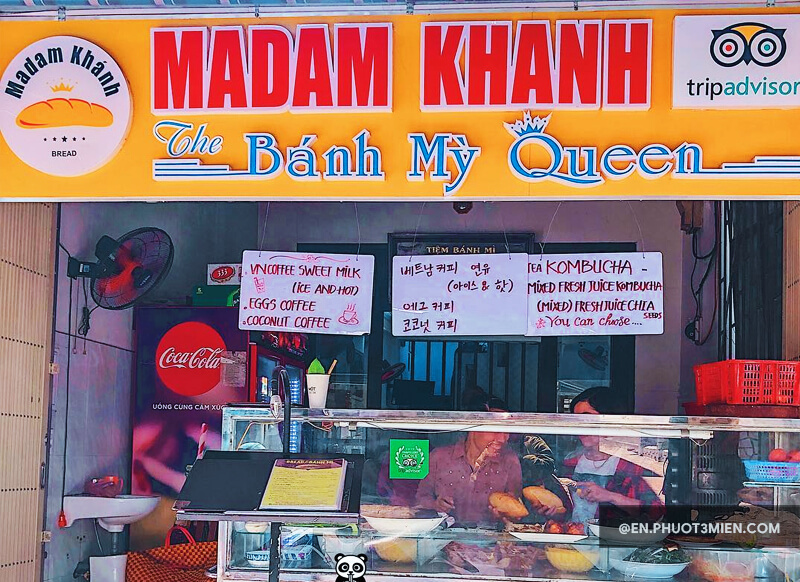
The abundance of spices produced by the mountainous terrain in the region makes central Vietnamese cuisine the most spicy, flavorful and complex in the country – distinct from the subtle Chinese & Lao-influenced north and the light tropical flavors of the south, generally attributed to Cambodian and Thai influence. Some of Vietnam’s signature dishes produced in the region include bun bo hue (soup containing rice vermicelli and beef), mi quang (part noodle, part salad with an assortment of vegetables), cao lau (another noodle dish with pork and local greens) and banh khoai (cake made from cassava, sugar, salt and coconut milk).
On your way down, you will experience a gradual flavor explosion in your mouth.
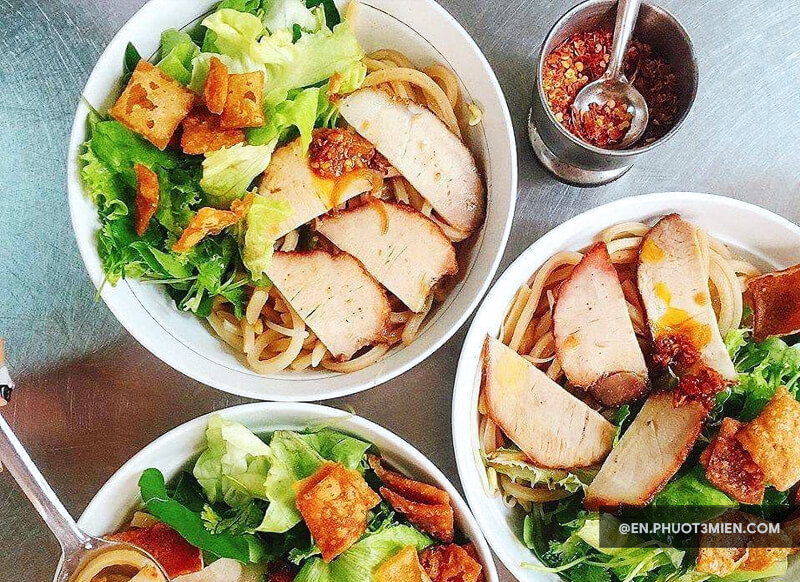
Cao lau is hard not to love, and sometimes it’s even worth singing a song for (you’ll see what I mean below). Dozens of vendors sell it on the streets – and even before you see them, you’ll hear the “Cao lau! Cao lau! You come try my cao lau!” floating towards you. One can best describe this dish as “Hoi An in a bowl” – it is the quintessential must-try dish in Hoi An, made of cao lầu dough noodles, Cantonese-style barbecued pork (char siu), pork crackling, bean sprouts, lettuce, fish sauce, soy sauce, garlic, sugar, salt, pepper, herbs such as chive and cilantro, and lastly, a spoonful of stock to top.
It tastes so light but is so complex at the same time. Ty Cao Lau, just off Phan Chu Trinh Street, is a famous stand that opens daily from 4:30PM to late at night. It is run by a man, Mr. Ty, I assume, who has been making cao lau for the past 20 years, so you know you’ll be getting a good dish. Once you cao lau…you cannot go back?
It would certainly be remiss of me to not mention my favorite food yet in Vietnam, banh mi. Oh banh mi! These may not have originated in central Vietnam (it is tough to trace back to the exact point) but Hoi An is known to have the best of these glorious sandwiches in all the land. The baguette was initially introduced during French colonial times, and throughout the following years the Vietnamese have made it their own, adding whatever the hell they feel like for filling: BBQ pork belly, chicken, fish cakes, meatballs, cold cuts, scrambled eggs, pickled carrots, daikon, cucumber, coriander, onions, chilies, mayonnaise, pate, liver paste, and the list goes on. Surprise is an emotion I will not feel if I ever come across a sandwich that has a noodle filling.
So, if you are ever in Hoi An, do head over to Banh mi Phuong – the most famous banh mi restaurant in the city, once again pretty much just a messy looking shack with a glass display boasting all the ingredients that could go into your selection. Over here you will eat the sandwich that will make you hesitate from now on when someone asks you if you would prefer to give up sex or food the rest of your life – it’s that good.
Southern Vietnamese Cuisine
Finally, things get sweeter in the south! You can even go so far as to say that the food here is a general reflection of the people in the region – they appear to be more laid back and happy. Maybe it’s the weather. The dishes down under are lighter and much smoother on the tongue, taking tips from Cambodia and Thailand. Saigon is also “international” unlike Hanoi which is more “cultural,” so foreign influence is readily apparent here, for example with ca ri (curry that is inspired by Indian and Malay flavors) and the many fusion restaurants you come across in the city (ie: Bloom, Café Restaurant, The Log, etc.) This city would be that cousin in your family who is too foreign for home but also too foreign for elsewhere.
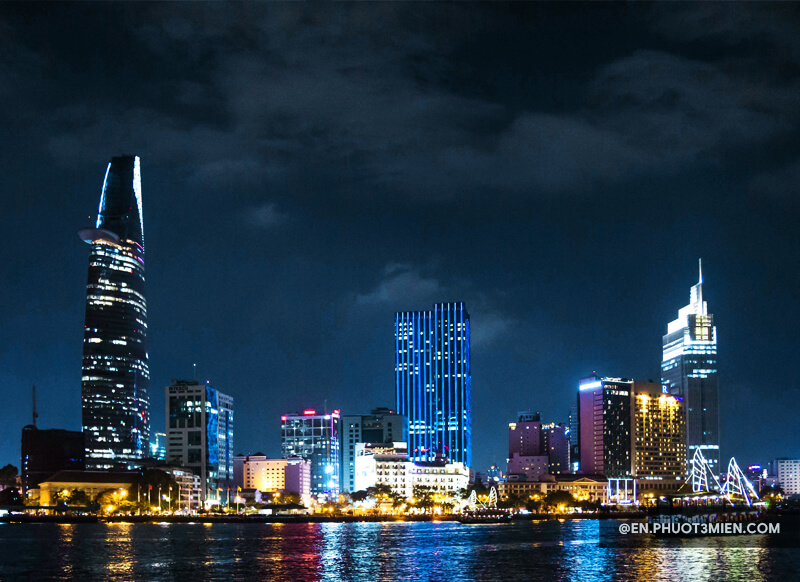
Saigon would be that cousin in your family who is too foreign for home but also too foreign for elsewhere.
The sweetness of the food is mainly due to the use of more sugar and even coconut milk in certain dishes. A good way to notice the differences in the regional cuisines of Vietnam is to try pho in both areas. Most pho lovers prefer the Southern version, which is of course sweeter, spicier, and contains a handful more herbs, garnishes, and sauces such as hoisin and chili which make the soup much murkier – whereas the northern pho takes on a clearer broth and a more balanced taste. A famous pho restaurant that consistently ranks among the best in downtown Saigon, is Pho Hoa on Pasteur Street – yet again nothing fancy but with adult-sized seats this time.
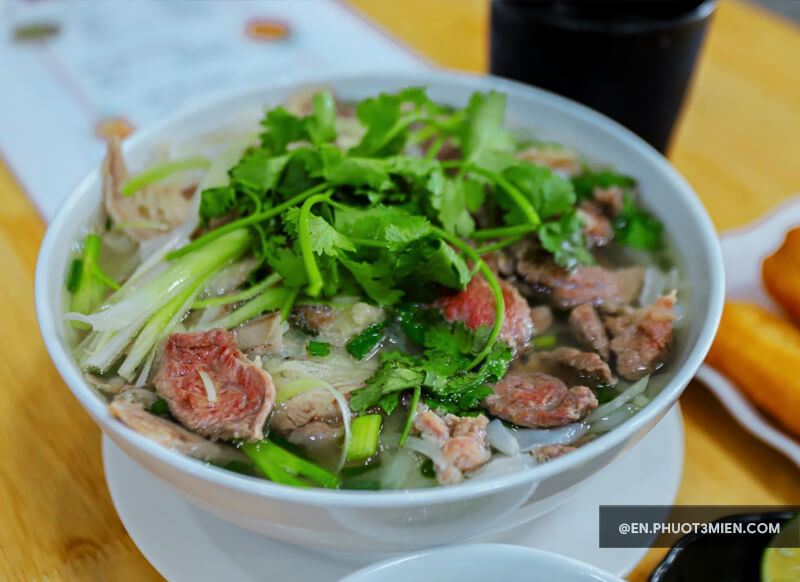
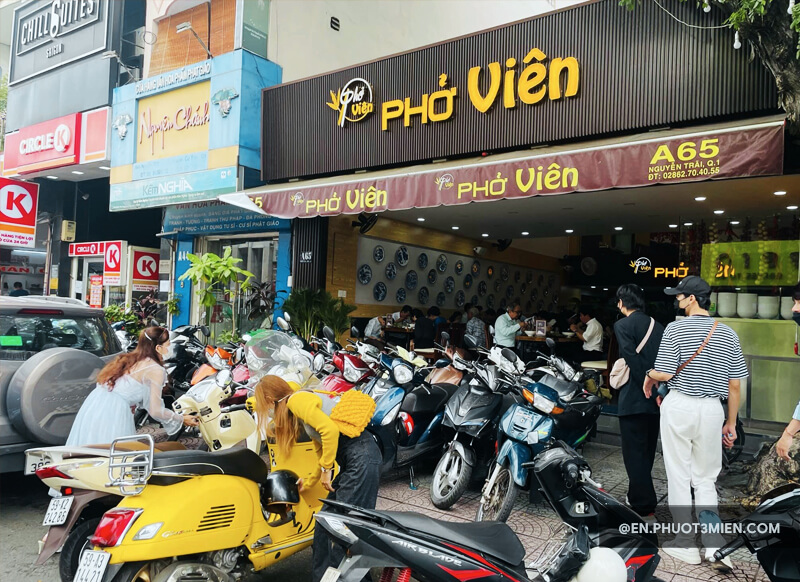
Banh mi op la, hu tieu nam vang, and goi cuon are three dishes you must try in the south. Banh mi op la is a fusion dish of western ingredients and methods of preparation – made on a frying pan, with eggs cooked sunny side up, often supplemented by slices of cucumber, caramelized onions and peppers and then filled in a nice crusty baguette. Listening to the pan sizzle as the vendor prepares your dish is enough to make your mouth water, never mind the aroma.
Hu tieu nam vang is a Cambodian and Chinese pork-based dish made of noodles, veggies and organs. Yes, you read that right. Organs. The weird had to show up at some point, right? And this lands at a 1 on a weirdness scale of 1-10, with 10 being really, really, really weird. Sliced organs, pork, shrimps, veggies and sugar concoct together into a noodle soup that is a favorite among southerners.
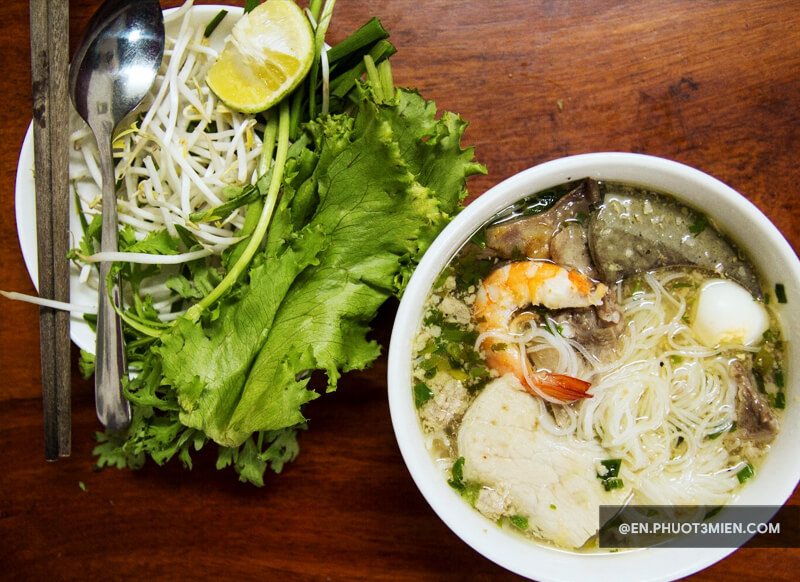
Then there is goi cuon – summer rolls. Fresh and healthy, this traditional dish is full of veggies, lean meat, shrimp and vermicelli noodles wrapped within thin translucent rice paper. Served with hoisin peanut sauce for dipping, this makes for a nice, light and tasty dish.
As a bonus to this article, I will add a meal not well known, even among locals. They call it banh tam bi and is full of coconutty goodness. It is yet again a dish of thick rice and tapioca noodles, herbs and pork, but this time a thick coconut dressing drowns the whole meal. The scallion and oil topping as a final touch certainly does add more flavor to all the coconut beneath – make sure you mix it well before you take a bite to be able to taste EVERYTHING in one go.
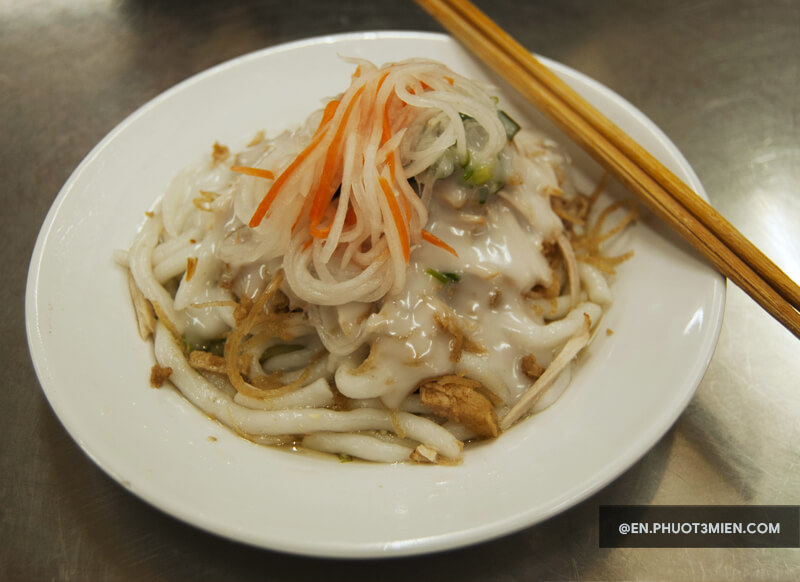
Banh tam bi To Chau at 271 Nguyen Trai Street is a small and cozy street side restaurant in which you can find this deliciously filling and unique tasting meal. On the entrance of the restaurant is a glass display showcasing some fat – Japanese udon-size – squiggly almost worm-like looking noodles (that you just know are sticky and gooey in texture), along with other ingredients one normally adds to noodles and soups in Vietnam. Take a seat inside, order yourself a nice big dish of banh tam bì and convince yourself to postpone your flight back home.
Seriously.
Enjoyed this article and want to learn about other Vietnamese food? Check out the food section in the Travel blog Phuot3mien for more fun and informative articles!
